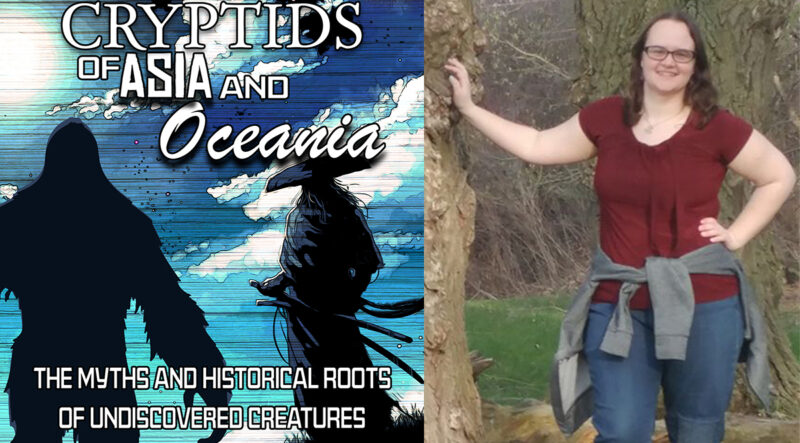Carol Scott’s idea for her book The Cryptids of Asia and Oceania had been simmering on the creative burner since high school.
The Brampton-based writer started the first draft of her book in 2015. Its publication came to fruition in September 2022, allowing her passion for digging deeper into cryptozoological folklore to reach its highest yield.
“The one thing I’ve noticed was the lack of focus on cryptids from Asia and Oceania,” she said, during a November Zoom conversation. “There’s the Yeti and thylacine, which do get a fair amount of attention. But there are so many different cryptids that just don’t get the attention.”
So, the cryptids that didn’t get the love have been given their own within the pages of her book. Those include the amomongo of the Philippines, the ropen of Papua New Guinea, the hominid nittaewo of Sri Lanka, and the sea serpent spotted in Turkey’s Lake Van.
Some of the challenges Scott faced was finding physical historical evidence of some cryptids, including the nittaewo, which had been thought to have gone extinct after being allegedly eradicated by the Veddah people.
“A lot of the original documents from explorers that had information about the occurrence are falling to bits, one researcher told me. There’s no indigenous archive,” she said. “That’s the linchpin of the book; trying to preserve as much of the research that has been conducted already and bringing attention to these cryptids.”
Research for the Yeti hit a similar snag for Scott, as a lot of the information on the Himalayan denizen was rare before the 19th century. But it raised the question of how much these cryptids have roots in colonialist explorers.
The kapre of the Philippines is a strong candidate for colonialist views of indigenous people. The Spanish used the dark spirit, akin to a Sasquatch, as an evil demon to dissuade Filipinos from aiding escaped slaves.
Scott’s passion for cryptozoology, as well as each animal’s role in folklore, is palpable in her voice. And it’s deeply rooted in her upbringing. From the age of four to 20, Scott lived in Texas, and her interest in unrecognized species all began while watching an episode of “Animal X”. It was bolstered by her family and the exposure to Texan folklore: the Wampus Cat and the Old Alton Bridge Goat Man.
“Cryptids have been a life-long interest for me,” Scott said. “I don’t remember which episode it was, but from that point on I was fully committed to cryptozoology and my parents were quite interested in it as well.”
Her parents David and Elizabeth are both avid cryptozoology buffs, and Scott would hit the cryptid conference circuit with her dad to learn more about America’s undocumented beasties.
“(My dad) was very encouraging with that. We would go to conferences. We would go to various cryptid locations,” she recalled, adding she visited Point Pleasant, West Virginia, home of the Mothman.
The Cryptids of Asia and Oceania is available through Beyond the Fray Publishing and on Amazon.

